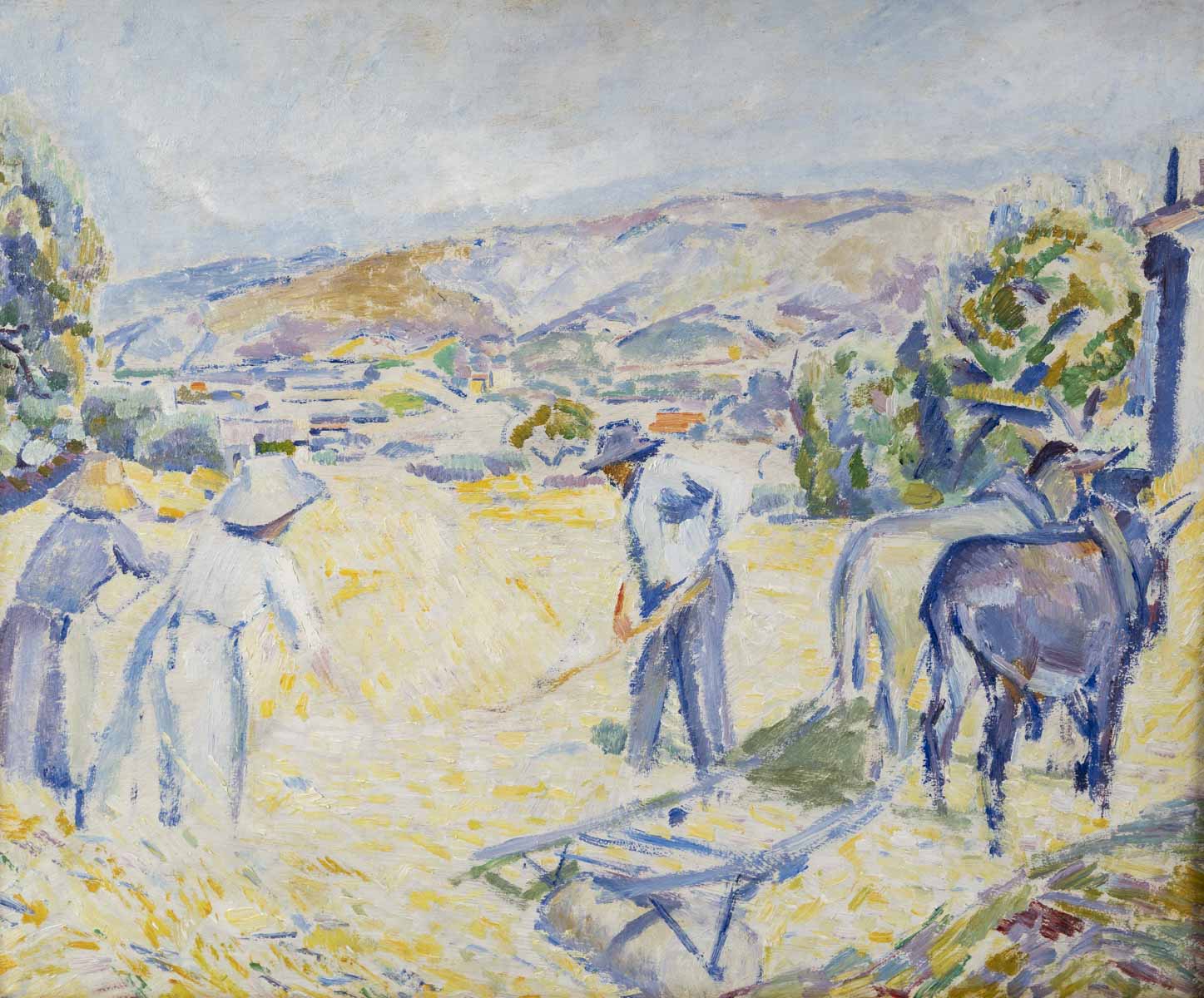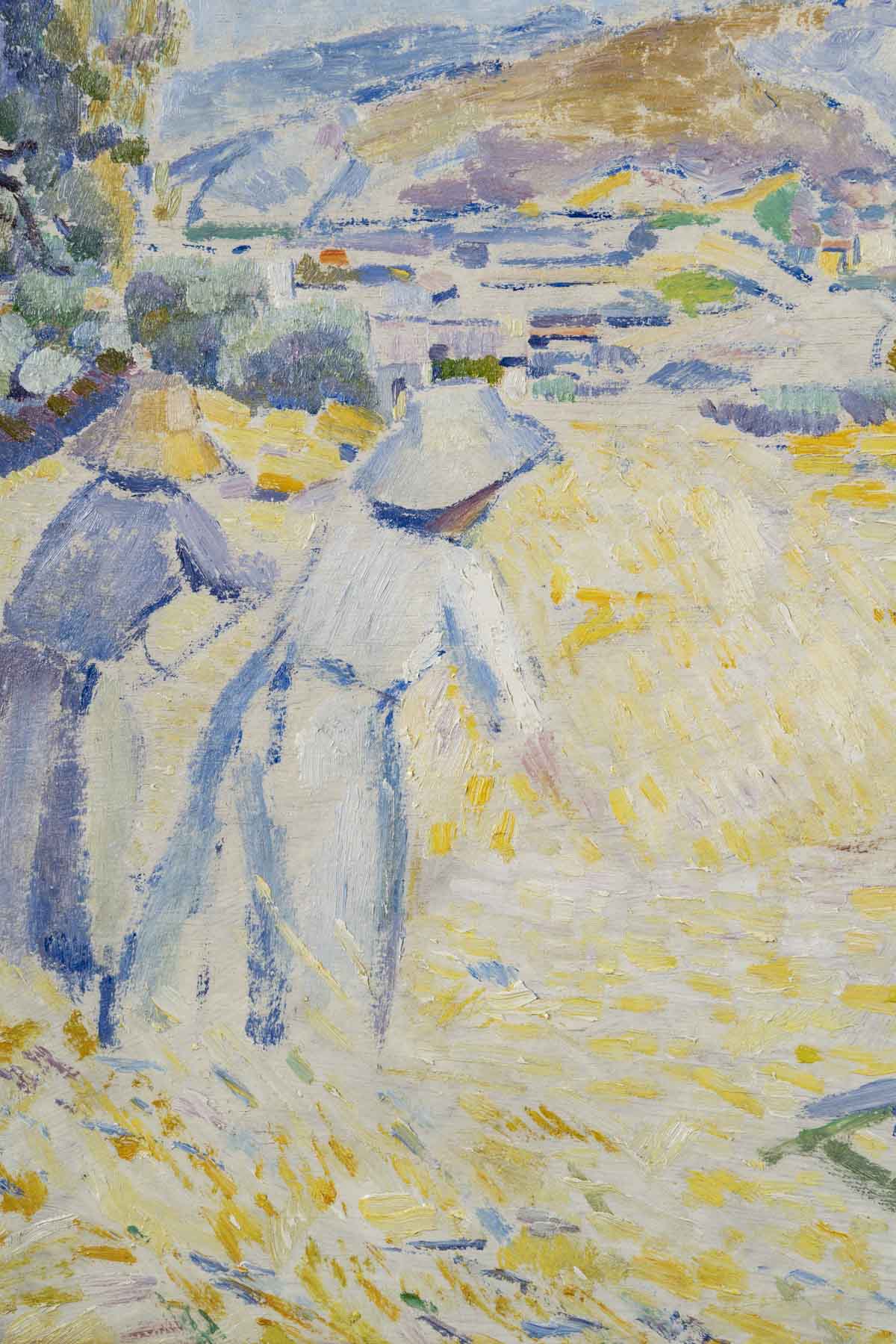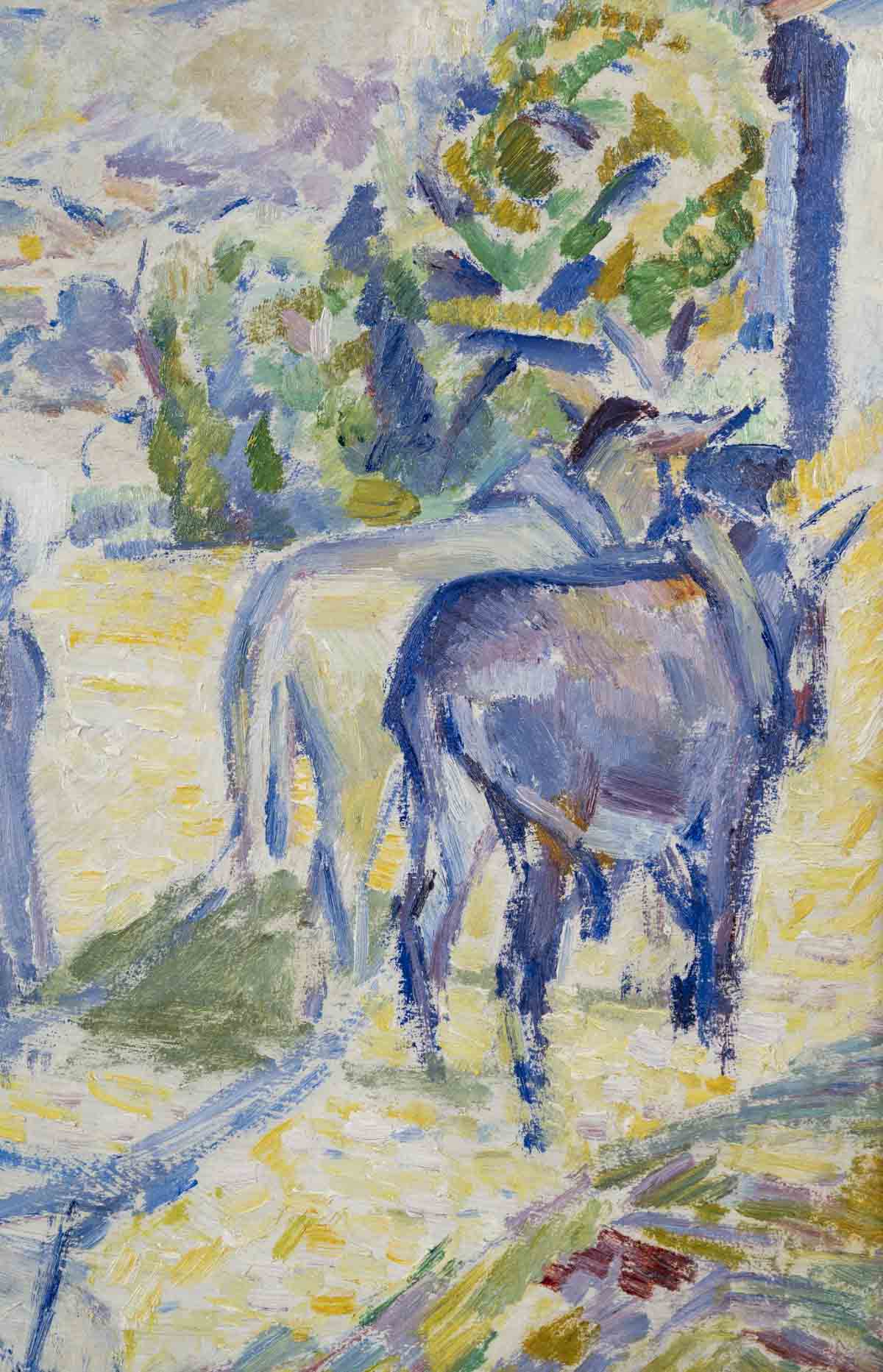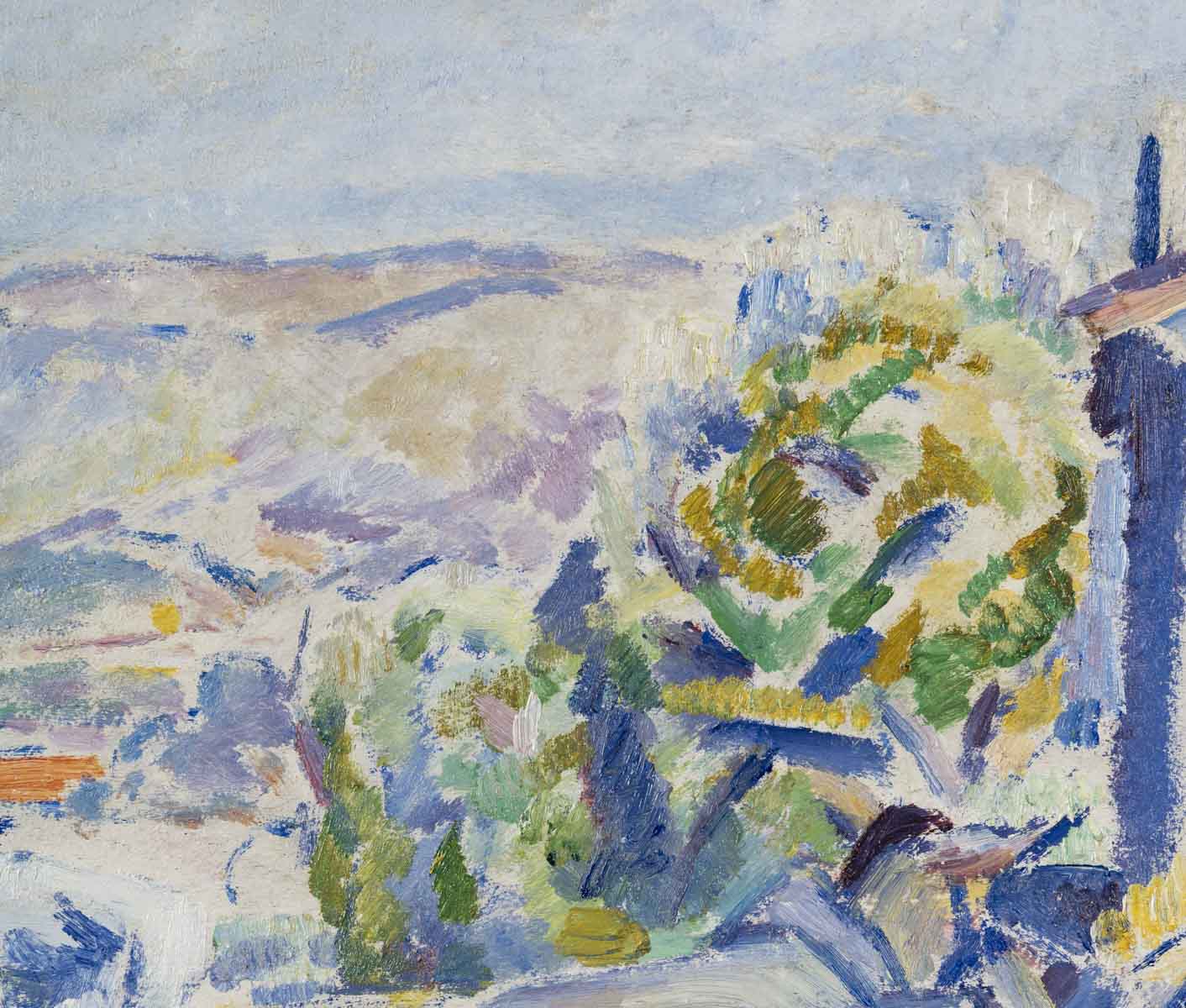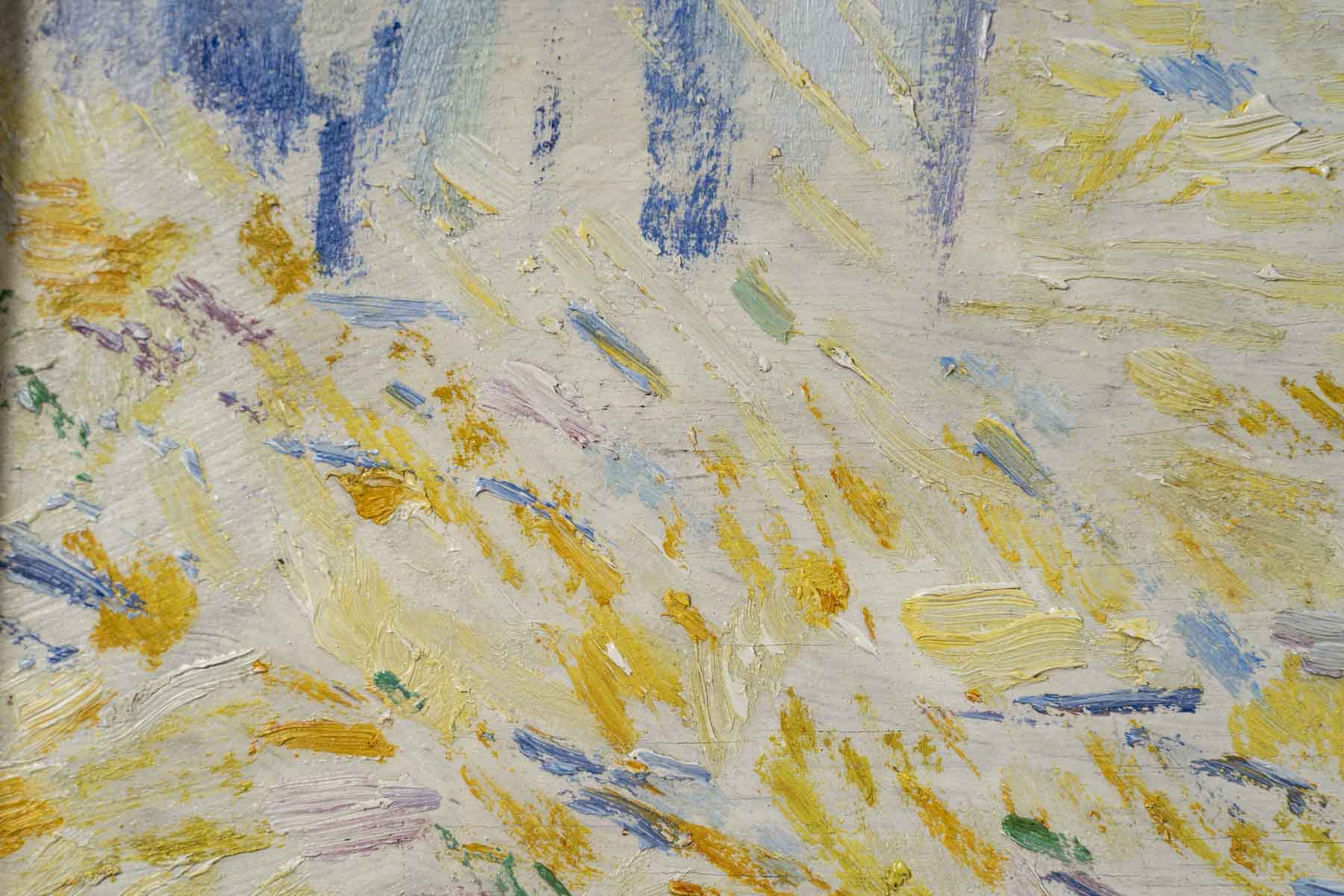Augustin Carrera
Haymaking, circa 1910. A sunny Provencal landscape by Augustin Carrera. A modern style of writing with a structured touch and tawny colors.
Oil on panel
Bears the studio stamp on the back.
Dimensions: 54 x 65cm
With frame: 80 x 91 cm
Price upon request
Augustin Carrera, a talented, luminous painter and outstanding colorist
The influence of Fauvism, which had just died out; simplified forms, partitioned by sharply defined contours, and bold chromatic research.
Augustin Carrera attaches particular importance to light and tonal harmony. In our work, touches of brighter colors – orange, purplish blue, yellow and crimson red – cleverly scattered across the canvas, bring contrast to this pastel-harmony scene of haymaking.
Happy haymaking in the scents and light of Provence
Haymaking is a recurring theme in painting.
The scene takes place at the beginning of summer, in June or July. Protected from the sun by straw hats, a farmer and two peasant women are busy cutting and harvesting hay. A cart pulled by two donkeys awaits the cargo. In the background, you can see a village and the mountains in the distance.
Human figures and nature appear perfectly blended, and a sense of tranquility dominates.
” In his painting, Carrera has found a way to combine the boldness of the colorist with the exquisite finesse of the atmosphere. “Bourdelle.
Biography
Augustin Émile Benoit Carrera was a French painter of Spanish origin born in Madrid and who died in Paris.
As a child, he followed his parents to Marseille, where they worked as espadrille craftsmen.
Gifted for drawing from an early age, he soon entered the Beaux-Arts school in Marseille, then the Beaux-Arts school in Paris, where he became a pupil of Léon Bonnat.
In galleries and museums, Carrera observed and immersed himself in the works of Cézanne, Gauguin and Seurat. But it was Degas, Toulouse-Lautrec, Van Gogh, Monet and Pissaro who had the greatest influence on his work.
From 1904, he exhibited at the Salons des Artistes Français, Artistes Indépendants and the Tuileries. He sent nudes, portraits, flowers, landscapes and harbor views. It is in his southern views that he shows himself to be the most ardent colorist. Carrera’s palette is astonishingly vivid, made up of bold, violent tones, a sort of fauve.
In 1912, the artist was awarded the Indochina Bursary. Carrera stayed in the Far East for eight months and brought back compositions with new subjects. The King of Cambodia commissioned him to create monumental panels for his palace.
During a trip to Spain in the following years, Carrera had a revelation when he discovered the works of El Greco and Velasquez.
On his return, he settled in Paris, in the artistic center of the Montparnasse district.
He forged ties with Albert Sarraut, a politician, collector and friend of painters, who included the artist’s paintings in his collection, among the greatest.
The art critic François Thiébault-Sisson, who followed him assiduously, enabled him to further consolidate his reputation, already acquired through exhibitions at Galerie Druet and Galerie Georges Petit.
Carrera’s works become highly prized by collectors
Augustin Carrera’s character was strong, proud and free, but his independent spirit didn’t prevent him from carrying out numerous state commissions.
Fascinated by the theater, he frequented numerous establishments and was commissioned to create the sets for the Marseilles Opera in 1924.
Carrera was made a Knight of the Legion of Honor in 1920 and an Officer in 1928.
Bibliography
– René Édouard-Joseph, Dictionnaire biographique des artistes contemporains, tome 1, A-E, Art & Édition, 1930, p. 243
– Benezit, 1961
– Camille Rouvier, Augustin Carrera: (1878-1952), 1962
– Gérald Schurr, 1820-1920, the little masters of painting:
– Valeur de demain, 1982, p. 58
Museums
Paris: Centre Pompidou, Musée du Luxembourg
Source
https://aaa-dijon.fr/le-fauvisme-hymne-a-la-couleur/
https://www.hauteprovenceinfo.com/actualite-41706-sisteron-exposition-d-augustin-carrera

